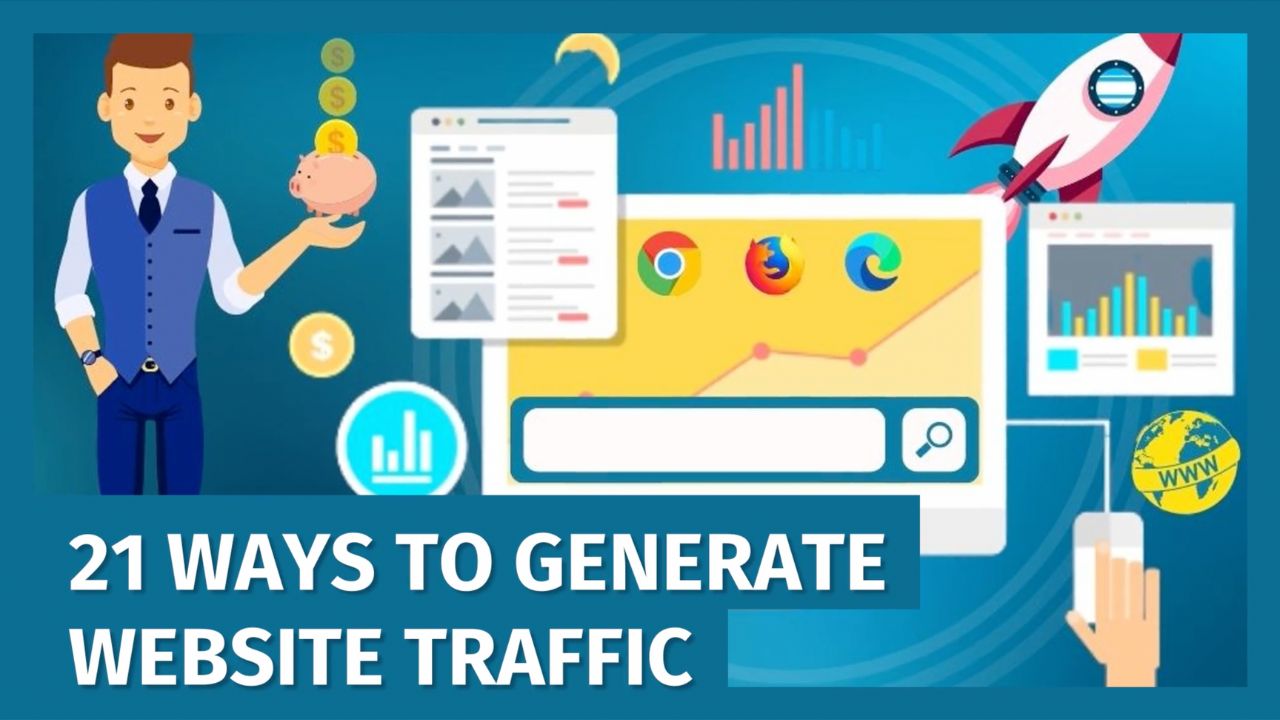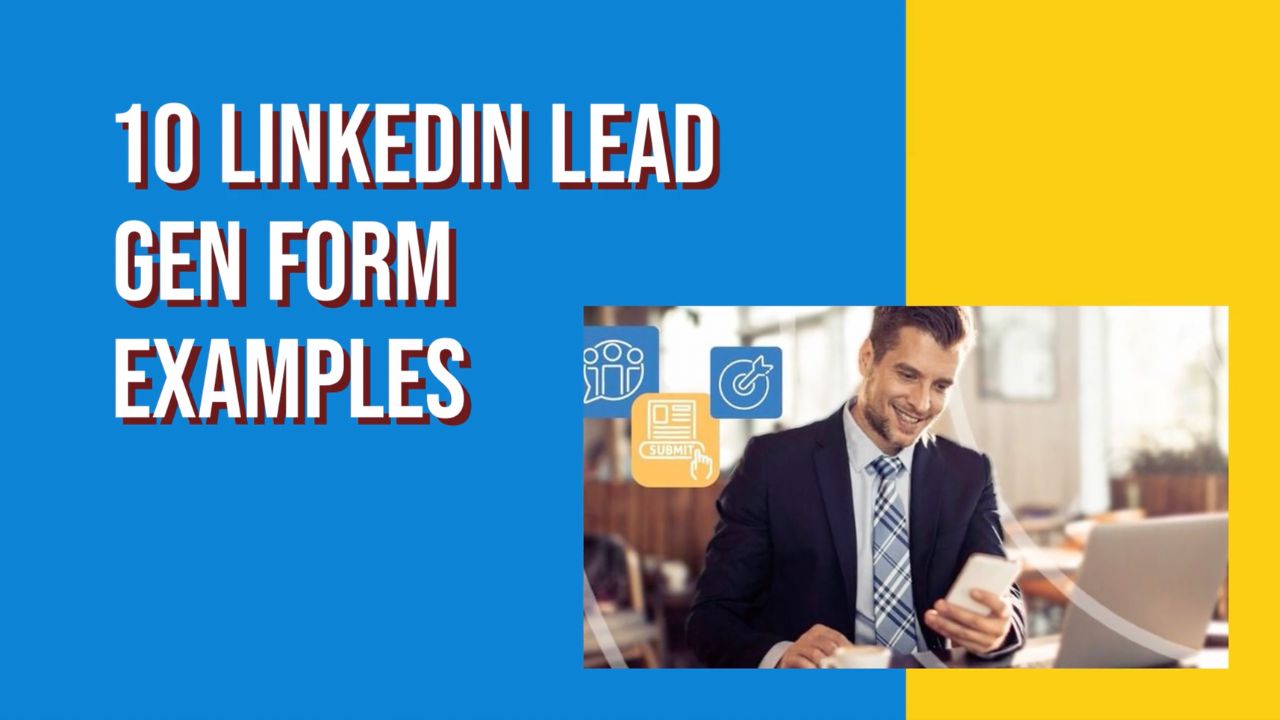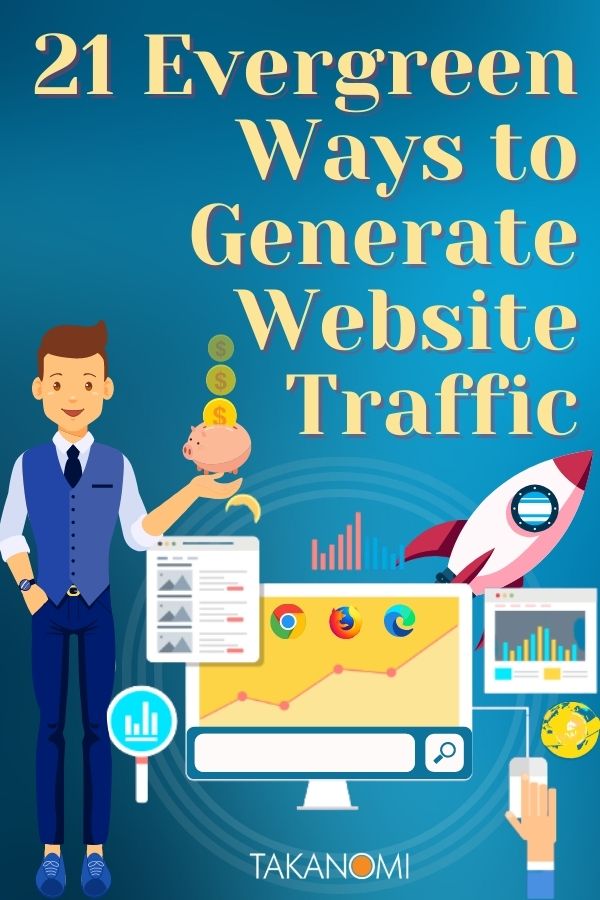Over the years, I’ve attracted millions of visitors to my websites—and this relatively new blog is growing rapidly in traffic too, using a tried and tested strategy.
The good news is that generating website traffic has never been easier, with so many different tactics and strategies available to employ.
This comprehensive post details 21 different ways in which to generate traffic to your own website, including both paid and organic methods.
The methods I’m sharing are evergreen too—meaning that once you start using them regularly and consistently, the traffic just continues to build. (I’m less interested in once-only methods that deliver a brief hit, but don’t provide any real long-term advantage).
We’ll look at paid traffic methods first, and then move onto organic means of growing your web presence and attracting traffic that builds long-term.
Download this list of 21 ways to generate website traffic so you have it to refer back to:
Paid Traffic Methods
Traffic is actually very easy to obtain—you just have to be willing to pay for it.
Even organic methods—often misunderstood as ‘free’—requires investment of time and resources (as well as a certain amount of willingness to play the long game for long-term rewards).
But with paid traffic, you can generate quality visitors to your website right now.
Paid traffic is often misunderstood as ‘expensive’, by which people actually mean they’re not seeing an equivalent or better return on their investment in it.
The key to making paid traffic work lies not just in the ads themselves or the particular ad network you’re using, but in what happens on your website when people arrive.
If the value of visitors to your business is lower than what you’re paying to get them there, you have a problem. It’s not the ads themselves that are an issue, but the business model.
Alternatively, if it’s higher, the amount of traffic you can generate for your website—via properly optimized campaigns—is virtually limitless.
“He who can spend the most to acquire a customer, wins”
—Dan Kennedy
Newbies to paid traffic campaigns also often make the mistake as seeing the initial results from a campaign as the end result. It’s not. But the result for them is that they give up way too early.
To start with, a campaign is unlikely to generate a positive ROI to begin with. The initial stage is for data gathering and you need to be prepared to invest a certain amount in that data, and not worry so much about ROI.
As that data comes in, if you know what you’re doing the campaign can then be optimized accordingly, tipping it into (often highly-) profitable territory.
1. Google Ads
Two of the main ways to use Google Ads is through their search ads or display ads. Using one or the other—or both—is one of the quickest ways to start generating website traffic.
Search ads
Search ads are of course those ads you see at the top or bottom of the SERPs when using Google.
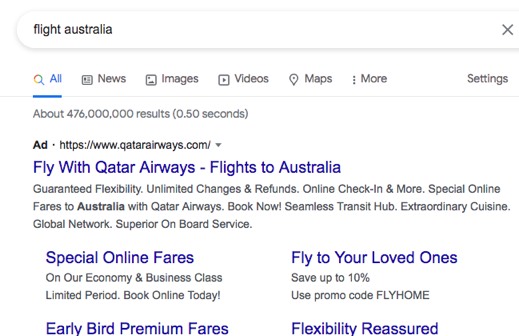
They look very similar to the organic search listings, except for the bold Ad text displayed before the URL.
Advertisers simply select the keywords they want to show ads for, create one or more suitable ads that lead to a page on their website, and decide how much they want to bid to show their ad.
You are charged for each click on the ad, depending on your bid settings.

Your placement on the search engine results page (SERP)—which has a significant bearing on the number of impressions your ad gets and how many click-throughs you attract—is dependent on a few factors such as:
- The relevance of your ad to the keyword
- The amount you have bid to show the ad
- The relevance of the landing page on your website to the keyword
- The quality and relevance of competing ads
Once your ad is being displayed, you can then begin to optimize and refine it in order to:
- Increase the position of your ad on the page
- Reduce your cost per click
- Reduce your cost per conversion
You do this through activities such as testing different ads, testing changes to your landing page and excluding less-relevant keywords that you don’t want your ad to be shown for.
Unlike the other paid traffic sources listed here, with Google’s Search ads you’re able to generate website traffic from people who already have a clear intention about what they want.
For this reason, the traffic can generate high conversion rates and is one of the most effective paid traffic sources available.
Display ads
As well as Google Search, Google also has a large network of websites on which to display advertisements. This is known as the Google Display Network.
The network consists of “over two million websites that reach over 90% of Internet users across the globe”.
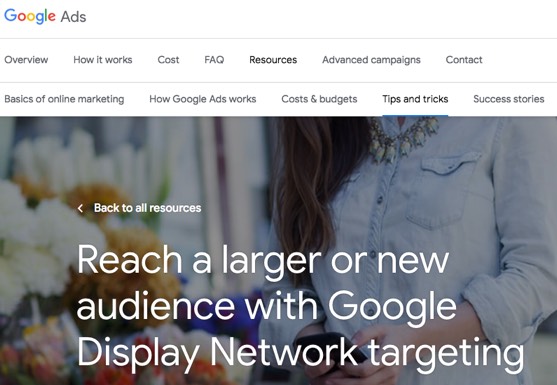
Participating websites have signed up to use Google Adsense, which means they sell ad space on their website to Google. When someone clicks on an ad on their website, they get a proportion of the cost of the click.
Whereas many people (including others writing blogs on the topic!) appear to assume that Google Display ads consist only of visual banner ads, you can actually run text ads on the network too. In fact, text ads are a big part of it.
But don’t make the mistake of assuming that the ads you run on Google Search will work in the same way on the Google Display Network.
There’s a key difference between the two.
With search ads, people already have clear intent. They’re searching for information, right now, about something which your ads then offer to supply.
With display ads, there is no such intent.
Instead, people are browsing content on a website of interest to them which is likely in some way related to your ad. But that doesn’t mean they have any interest in what you offer.
So click-through rates are a whole lot lower, and the language of your ads needs to be constructed differently.
Conversion rates tend to be lower too after they click—they may be interested enough to click through, but that doesn’t mean they have a right-now pulsating desire to have what you’re offering. It’s more likely something on their someday maybe list.
But that doesn’t mean the ads won’t work—as the following graphic from Wordstream illustrates, the cost per click will in most cases be significantly lower too.

To advertise on the Google Display Network, you can choose to:
- Target ads manually—for this, you’ll need a good idea of exactly who you want to reach in terms of their interests and demographics, and can then further optimize your campaign as it runs and starts to give you data.
- Let Google’s system optimize targeting for you via their Smart display campaign option—for this option, you’ll need to be prepared for the campaign to run for a while. As it does so, the campaign will automatically optimize to bring you steadily improving results.

Related:
- Smart Display Advertising: What Is It and How Do You Create a Campaign?
- Smart Display Campaigns: A Step-By-Step Tutorial
Other Types of Google Ads
While Search and Display ads are the main two types of ads offered by Google, other types of ad to generate website traffic include:
- Video campaigns—these are video ads, usually 6 to 15 seconds long, that show at the beginning of or during YouTube content
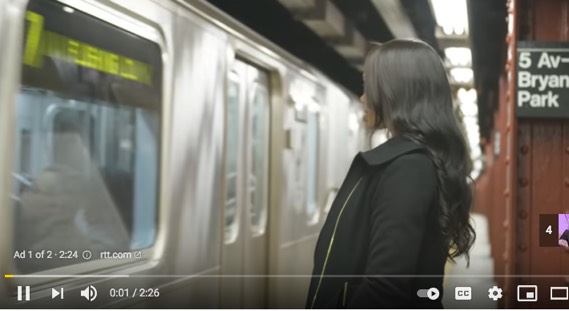
- Smart Shopping campaigns—these are the kind of ads for specific products you might be searching for on Google. For example, if you type in just shoes, you’ll see ads like the following.

- Discovery campaigns—run personalized ads on Google properties such as YouTube, Gmail and Discover.

To find out more about generating traffic through Google ads, HubSpot provides a useful overview.
2. Facebook ads

The other primary source of paid traffic is of course via Facebook ads. Facebook’s power lies in the detailed data it holds about Facebook users, which allows you to target advertising very precisely.

The data it holds about individual users includes:
- How old they are
- Their gender
- What their interests are
- The types of ads they respond to
- Where they live
- How frequently they travel
- Their relationship and family status
- Income level
- Whether they’re, for example, about to travel somewhere, getting married, having a baby, just had a baby, looking for a new job, want to buy a house… and so much more.
Effective advertising on Facebook means knowing as much as you can about the type of visitor you want to attract, so that you can accurately target them.
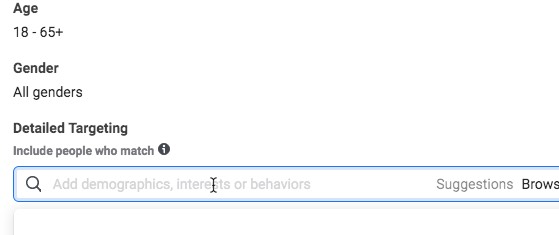
As your campaign starts running and collecting data, you can then optimize it further, reducing your costs while improving your targeting.
This involves studying the results Facebook gives you about who is actually responding to your ad, and adjusting your campaign accordingly.
So for example you might find that people who are married, are within a certain age bracket, and who have a certain level of household income give you a much stronger ROI than people with other demographics.
You can then capitalize on that finding by targeting your ads more precisely.
You should also test your landing page to see what the audience clicking through responds to.
As well as targeting your ads to selected demographics and interests, you can also create audiences to advertise to, where people ‘look like’ or have similar characteristics to other people, based on existing data.
That might be data you’ve uploaded—such as email addresses you’ve captured from other website visitors—or data created by the use of Facebook’s pixel on your website.
To find out more about generating website traffic through Facebook ads, AdEspresso has a useful guide.
Recommended: How to Create a Facebook Lead Generation Campaign
Download this list of 21 ways to generate website traffic so you have it to refer back to:
3. Instagram ads
Owned by Facebook, Instagram ads offer another powerful paid method of generating traffic for your website.
As the following graphic from Statista shows, it’s not as large as Facebook in terms of users—but it’s still huge.
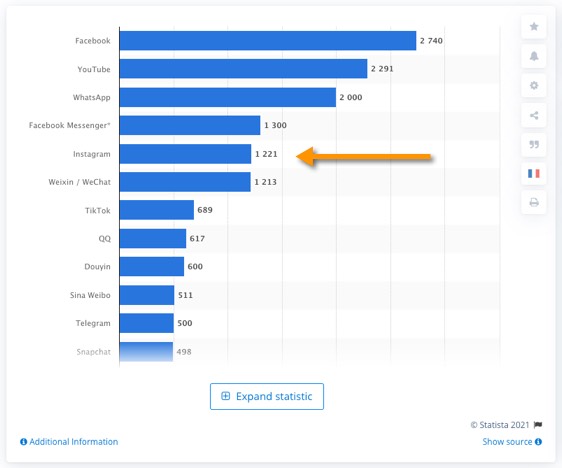
While it’s not possible to use clickable links with traditional organic Instagram posts, with a paid ad on the network, you can use a call to action button to drive visitors directly to your website.
For example, the following ad uses the Learn More call to action button—clicking the button takes you straight to their website.

Ads on Instagram are set up in the same place as Facebook ads. In fact, when you place an ad on Facebook, it can be shown on Instagram too unless you specifically tell it not to.
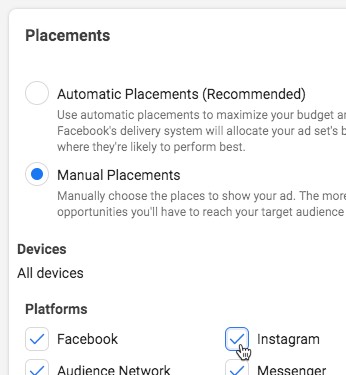
Fine tune your ads for Instagram’s audience by selecting Manual Placements, and deselecting the other platforms so that only Instagram is selected.
You can then further choose where you want your ads to appear on Instagram. The best results will come from having separate ads for each placement so they can be optimized individually, as they all tend to perform differently.
For more information on using Instagram ads for website traffic generation, checkout WordStream’s guide.

4. Pinterest ads
Pinterest is growing rapidly, and currently has over 450 million monthly active users—that’s bigger than Twitter.
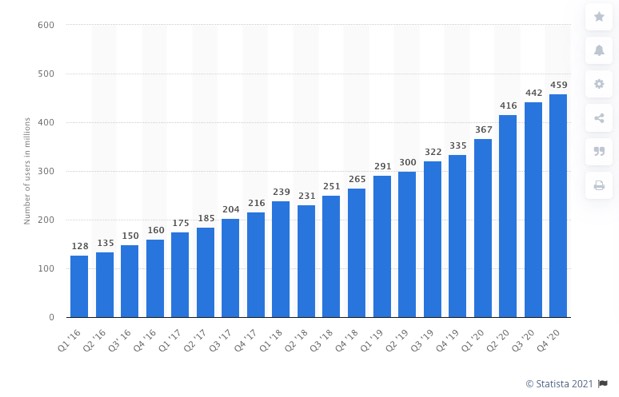
Not only that, but its users are actively looking on the platform for new products to buy.
That makes it an ideal platform not just for generating traffic, but also for generating sales, particularly if you have an ecommerce product-based website.
After all, one out of two Pinterest users have made a purchase after seeing an ad (referred to as a Promoted Pin) on the platform.
To place ads on Pinterest, you first need to either:
- Convert an existing account into a business account; or...
- Create a new business account.
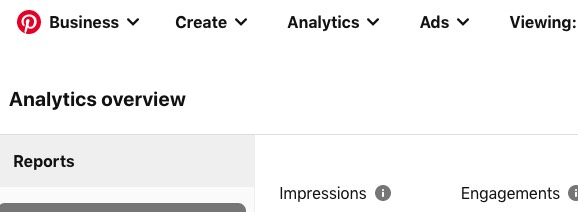
As well as giving you the ability to place ads, business accounts provide facilities such as analytics and the ability to add other users to your account to help manage your ads.

When you promote a Pin, it initially shows with the Promoted by text right beneath so people know it’s an ad.

However, once a Pinner has saved it, it becomes a normal organic Pin, the Promoted by text disappears, and you can attract additional traffic at no extra cost.
Note the call to action button—in this case, Learn More—that drives traffic back to your website.
To place an ad on Pinterest, click to create an ad from the top menu, and then choose your campaign objective.
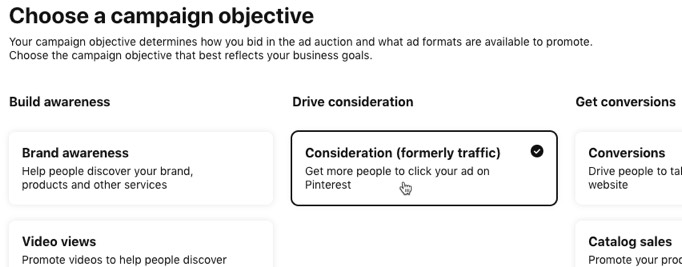
Targeting options include keywords and interests, demographics, or choosing an actalike audience (similar to Facebook’s lookalike audiences).
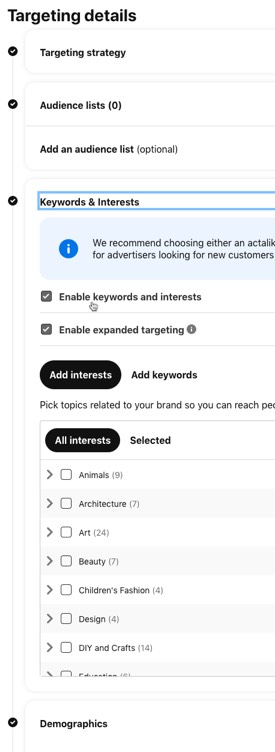
For more information on using Pinterest’s ads for website traffic generation, take a look at Later’s guide.
5. Twitter ads
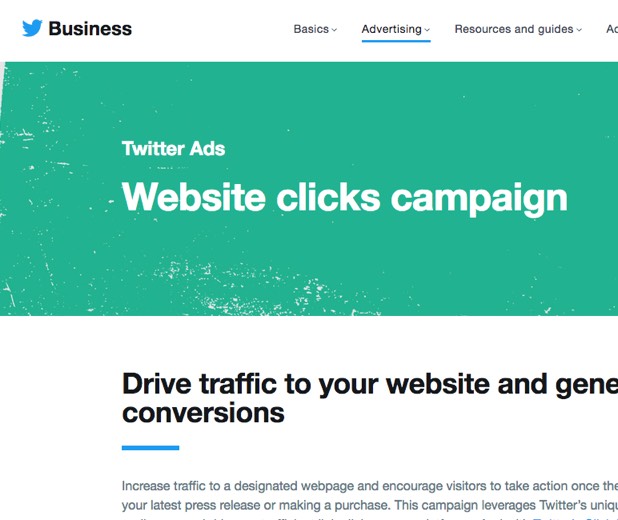
Twitter is another powerful paid traffic platform, with their Website clicks campaign specifically designed to drive traffic back to your website.
They recommend doing so via their retargeting capabilities—advertising to previous website visitors to bring them back—and creating look-alike audiences of your visitors to reach similar people on the platform.
To create an ad campaign for traffic generation, head to their ad manager, click to create a campaign, and set the campaign objective to Website clicks.

Your campaign can be targeted based on:
- Custom audiences—this is an audience you’ve created based on your email list or generated via Twitter’s pixel.
- Keywords—include or exclude keywords users have searched for, tweeted about or that are related to Tweets they’ve engaged with.
- Follower look-alikes—people who have similar interests to one or more Twitter accounts.
- Interests—related to what users have tweeted about, who they follow and the type of tweets they have engaged with.
- Movies and TV shows—target users who have watched a particular movie or TV show, based on whether they have tweeted related Tweets when the movie or show was airing.
- Events—such as conferences, entertainment-related events (such as festivals and award shows), political events, and others.
- Conversation topics—related to their tweets and engagement activity.
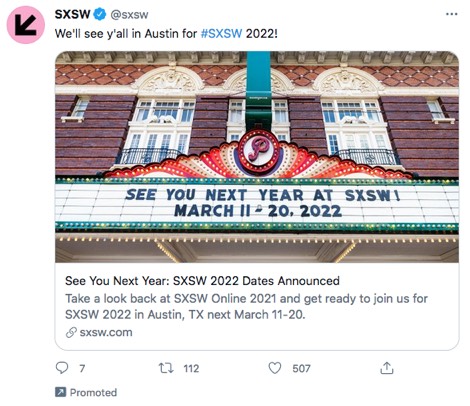
For more information on how to use Twitter ads, see our simple guide, or watch the quick summary:
6. LinkedIn ads
Before we move onto organic methods of generating website traffic, let’s take a look at LinkedIn ads.
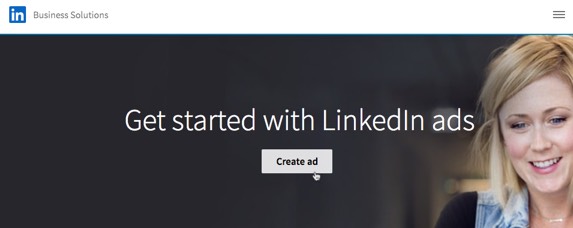
LinkedIn ads are often seen as being more ‘expensive’ than elsewhere, but the quality of the traffic and the value of the visitors you receive are often higher—so the results can outperform those you may get from other paid traffic platforms.
Personally, I’ve ran LinkedIn campaigns where the cost per conversion was at least on a par with, if not better than, other sources such as Google or Facebook ads.
If your business sells B2B, you should be at the very least testing out LinkedIn ads. It is, after all, rated as the number one platform for B2B lead generation by marketers.
Get started by logging into LinkedIn, and then heading to their ad platform. On creating an ad account, a default campaign group will be created for you that you can then manage.
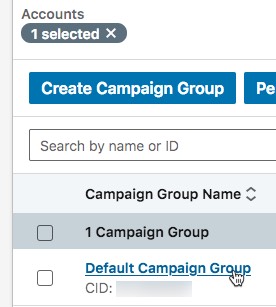
Click to create a campaign, and set your Objective, such as to generate website traffic.
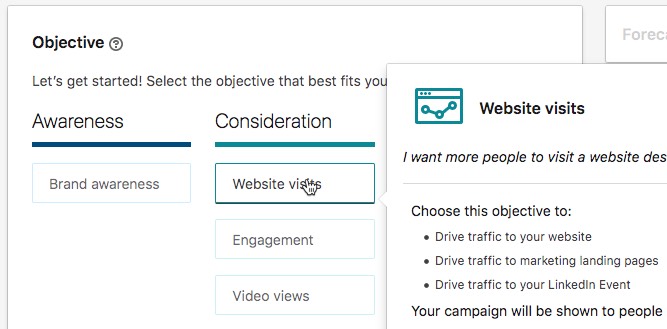
Targeting options are similar to the other platforms, including:
- Creating your own audience whether from data, list upload, and so on.
- Targeting LinkedIn users based on demographics, interests and other characteristics.
- Because of the nature of the platform, you can also target users based on the specific company(s) they work for, educational background and job experience.
In setting up your ad(s), various call to action options are available.
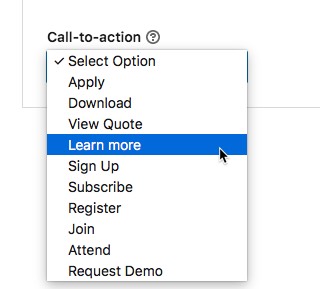
The most suitable call to action where the sole objective is for driving traffic is probably Learn more, as in the example below.

Download this list of 21 ways to generate website traffic so you have it to refer back to:
Organic Traffic Methods
Whilst paid traffic methods have more immediate effects, organic traffic methods are a long term play.
They generally involve hard work, consistency and commitment—and a lot of patience in the early stages, as results start to build but rewards are few and far between—but the impact long-term is transformative, and the results get stronger over time.
For maximum traffic generation, ideally you’ll use both paid and organic traffic methods—and the two work well side-by-side, such as paying to boost the reach of your content on social networks.
But as ad costs continue to rise, committing to an organic traffic generation strategy means you’re never reliant on any one channel—always a dangerous position to be in—and the ability of your business to reach new audiences and grow becomes increasingly strong.
What’s more, any reliance on paid channels comes with the risk that your ad accounts get shut down. This happens all the time, and at the very least can be immensely disruptive.
So ensuring you have solid organic sources of traffic too, not only helps to mitigate risk but is all but essential.
Not only that, but organic traffic can become wildly more profitable than paid:

“...the traffic from the display campaign is just slightly larger than the organic traffic for that period [yet o]rganic traffic is producing 1376% more goal completions than paid traffic and generating 2265% more in terms of traffic value…”
—Jared Kimball, ZahavianLegalMarketing.com
So let’s take a look at the various organic traffic methods available to you. In truth though, these work best as part of a unified content marketing strategy, rather than as siloed, isolated tactics.
7. Blog on Your Own Website
A blog is generally the central fulcrum of any content marketing strategy, providing opportunities to:
- Attract traffic from search...
- Repurpose that content for other channels, tapping into huge third-party user bases and building powerful audiences of your own to filter back to your website...
- Convert that traffic into leads and sales that third-party platforms don’t allow for, such as opt-in optimization and enabling the retargeting of visitors with ads.
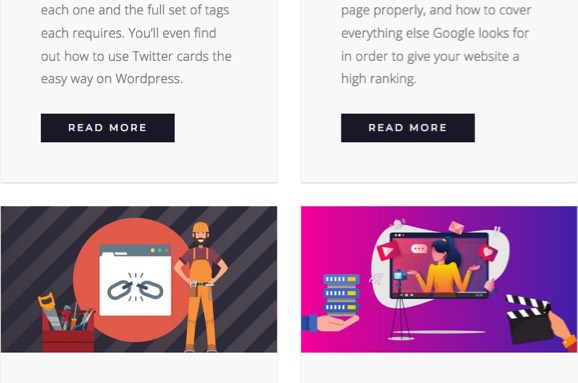
Blogging effectively for website traffic generation involves:
- Researching what your market is looking for by doing keyword research, and spotting opportunities for your blog to rank well on search.
- Posting content regularly and consistently—at least once a week is recommended.
- Repurposing that content, again regularly and consistently, to build incoming links and audiences on third-party sites that can further amplify your content. This isn't just social media, here are 25 different ways to approach it:
- Interlinking your posts with related keywords to help those posts rank appropriately—more on optimizing your website below.
- Studying your results in order to improve and optimize your strategy on a continuous basis.
However, the process of constantly creating content, and then amplifying and repurposing that content potentially for months afterwards across multiple channels can become more than a little onerous if not overwhelming to keep up with.
Use the Trafficonomy software, specifically designed to make organic content marketing a lot more effective and efficient, to help.
8. YouTube Videos

By publishing videos regularly on YouTube, you:
- Can appear on the top two search engines in the world, Google Search and YouTube itself (presuming they're effectively optimized).
- Build an audience via your own YouTube channel.
- Attract increasing amounts of traffic back to your website, via calls to action in the video itself, and links in the description.
You can use the videos in other traffic-generating ways too, such as:
- Sharing natively on social media to engage and grow relationships with your audience.
- Embedding the videos back on your own website (just as we've done in this post!), you help keep visitors on your site for longer, which can help grow your rankings as well as boost social shares.
- Embedding the videos into other third-party channels where you may be creating content, such as Medium and Quora.
9. Blog on Medium

Medium is now a primary channel through which to publish text-based content, which I’ve explored in depth previously.
As one of the top 100 sites in the world, it gives you a means of reaching millions of people who may otherwise never have heard of you.
You can publish content for free, develop your own publication on the platform (or contribute to others with existing, often very large followings), and grow your own audience of followers who will support and help amplify your content.
(Here’s my own publication on the platform which I’m now publishing to regularly).
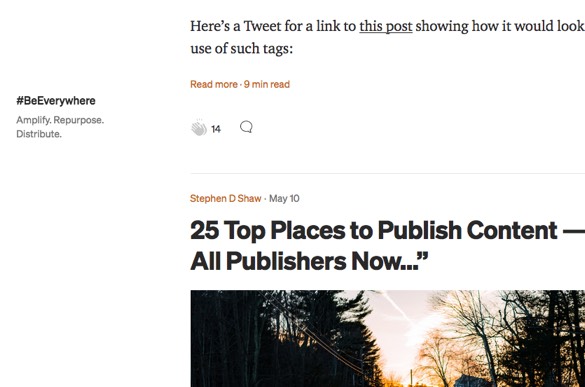
Along with your blog and YouTube, Medium also gives you another means of appearing on Google Search with content relevant to your market.
I click through on articles on Medium all the time from Google Search. You probably do too. That could be your market doing the same with your own content.
However, for this to work, the content on Medium needs to be different than that posted on your blog, so it can stand on its own merits in search. Otherwise it’s treated as syndicated content, and only one version will be shown.
Yes, this takes more work. But most of the work is in creating the initial piece of content. Repurposing it is a lot quicker and can be easily outsourced—and the rewards are much higher than just copying and pasting existing content onto the platform.
Download this list of 21 ways to generate website traffic so you have it to refer back to:
10. Answer Questions on Quora
Quora is another key platform that, when used in the right way, can also drive significant amounts of quality traffic back to your website.
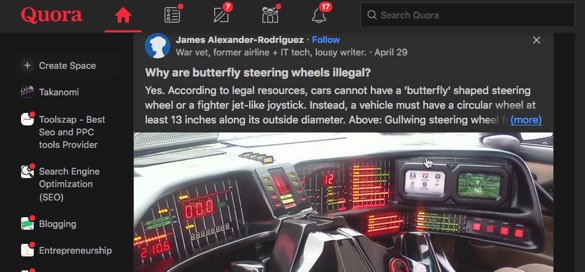
As I’ve referred to previously, you need to be careful how to approach Quora so that you don’t get suspended or find yourself thrown off the platform. But that’s not hard to do.
Your focus should be on answering relevant questions for your market as fully, as accurately and as helpfully as possible.
If there are opportunities to link back to say more in-depth content on your blog that can assist users further, then do so.
But even if some answers don’t have direct links—and ideally, some won’t—you’ll still benefit by growing followers (who help amplify future answers) and attracting click-throughs via links in your profile and from visitors seeing mention of your domain in your credentials (shown above answers).
“Quora has been nothing short of a miracle for me. I get enough queries via Quora that I have to decline clients, referring them to other specialists. How cool is that?”
—Faisal Khan, Banking, Payments & Fintech Consultant
The effects of using Quora are long-term. Since I started contributing a few years ago, my answers continue to attract tens of thousands of views every month, and have so far amassed nearly 2.5 million views in total.
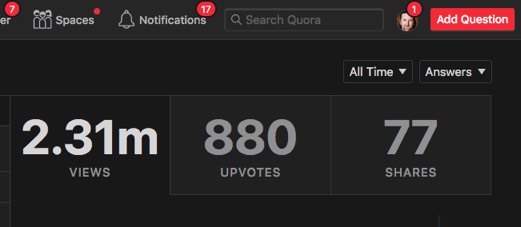
Of course, only a small proportion of those views translates into direct traffic. But it does translate into another source of traffic that can generate hundreds of visitors for little ongoing effort.
11. Optimize Your Website for Google Search
To generate the maximum amount of traffic from Google Search requires optimizing your website to both ensure visitors have a positive experience, and to help Google understand what your website is about.
For more information on exactly what to do, see my previous post on exactly how to get your website on Google’s first page.
But here’s a brief overview of how to get the best results:
- Provide genuine value to visitors—look to make each page on your blog for example, the most useful and valuable resource for a particular keyword when compared to other pages on a similar topic.
- Add keywords into the URL of the page—the URL of a page should reflect what the page is about. This helps inform Google, and also helps attract click-throughs from search which itself helps to increase your rankings.
- Use keywords in the meta title—similarly, it figures that if your page is focused on something, that’s going to be reflected in the title, and gain helps inform how the page is ranked.
- Use keywords in the headline—the headline is likely very similar to the meta title, and is a key part of optimizing the page for Google.
- Ensure the page’s content reflects relevant keywords—always create content first and foremost for the visitor, but work keywords into the copy in a natural way, and without overdoing it.
- Use keywords in the names of images, and alt text—the images on the page should also reflect what the page is about, so use the names of images appropriately, and add alt text (alternative text for if the image doesn’t display, and for the partially sighted) to further reinforce the topic.
- Add internal links between pages—as content on your blog grows, you’ll find ample opportunities to link to previously-created posts using relevant keywords or within a relevant context (such as the general meaning of a sentence even if you’re not using the exact keyword to link through).
- Ensure a positive user experience—this includes factors such as spelling and grammar, image optimization, mobile responsiveness, page speed and other factors. For more information, see this post.
- Keep the content up to date—content can easily slip back down the rankings as it becomes outdated, and newer, fresher content from elsewhere comes along. Refresh posts regularly to maintain and grow their position in the SERPs.
You should also sign up for and regularly use Google’s Search Console to see how your website is performing on search and to fix any issues as soon as they arise (here's how to set it up in the right way).

As content on your blog grows and becomes more authoritative, this all supports the ranking of the homepage of your website for your major keywords.
By linking back to your homepage where appropriate from your posts, using relevant and related keywords, you help your website as a whole to rank highly, including for highly competitive, high-volume keywords.
12. Optimize Your Website for Social Media
Social media is of course another key source for generating traffic to your website, though you should be aware that you’ll:
- Nearly always get more volume from search engines (Google drives 8x the traffic of social media), and…
- Find search visitors are easier to convert, simply because they have found your site by searching with intent rather than just seeing something by happenchance in their feed.
However, social media is of course still important. Social platforms generate traffic in their own right and support and strengthen your ranking on search.
So you need to make it easy for people to share your content.
That means:
- Adding social sharing icons to your content pages—you’ll see some top and bottom of posts here for example.
![]()
- Ensuring that your website uses social meta tags (Open Graph tags as well as Twitter Cards)—this means that, when your content is shared, it’s shown in a visually-engaging way on social, attracting eyeballs, visitors and reshares of that content.

And of course you also need to look at growing your audiences on the social platforms that are relevant for your business, which we’ll look at further below.
13. Publish LinkedIn Articles
If your business is B2B-focused, LinkedIn’s article publishing platform provides you with a powerful opportunity to reach professionals on the network with an interest in your content.
Publishing an article is as easy as clicking the Write article button from the top of your LinkedIn feed.

Similar to Medium (see above), you can repost blog content from your website onto LinkedIn, rewrite it as fresh content—or, if you’re rewriting content for Medium, take that version and repost it to LinkedIn.
You’ll get the best results from using either the second or third option, as this provides you with additional search visibility on Google.
The benefit of publishing articles natively on LinkedIn is that when you share that content, you’ll generally attract a lot more exposure.
After all, like other social sites, LinkedIn likes to keep their users focused on their own platform—that’s how they generate income from advertising, and achieve better results for their advertisers.
So when you share native content, it tends to get prioritized exposure in the feed.

See my previous post for detailed information about publishing articles on LinkedIn, but in terms of using the strategy to generate traffic back to your website:
- Incorporate links into the content that points to useful resources back on your site, such as related blog posts.
- Add some bio information at the end with a suitable call to action and a link to your website.
- Consider recommending some related posts at the end of the article too, with links back to your website, or even to content you have elsewhere such as Medium.
14. Publish SlideShare Presentations
SlideShare is often overlooked by B2B marketers for traffic generation, but has a number of advantages which I’ve covered previously.
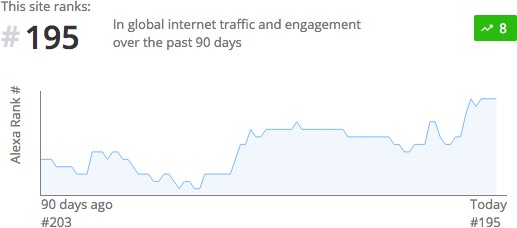
Apart from generating traffic from the SlideShare platform itself—it’s a top 200 website for traffic and engagement levels—when you create presentations, you can:
- Embed them back on your blog, keeping visitors for longer and helping to boost your rankings.
- Quickly turn them into videos by simply recording the screen with a voiceover, giving you additional exposure on YouTube and another listing on Google Search.
- Sare them with your social networks, growing credibility and authority levels, and thereby helping long-term traffic levels.
- Embed them into content on other platforms such as Medium, growing engagement and increasing exposure of your content.
- Upload and share them elsewhere, such as Scribd and AuthorStream.
To encourage viewers of the presentation to visit your website:
- Include a suitable call to action, such as an offer for a free resource that has some relevance to the presentation’s topic and provides additional value.
- Include the name of your domain on each slide, preferably using a small image somewhere so it’s not shown over and over in the extracted text beneath the presentation on SlideShare—those interested can then simply look up the site via a browser.
Keep things simple by following the method I outlined previously for creating presentations from repurposed content—I also mention a few tools you can use to make them.
15. Start Podcasting
Podcasting (along with audio content in general) is a fast-growing medium you can take advantage of for traffic purposes.
Valued at USD 9.28 billion back in 2019, it’s expected to grow at a compound annual growth rate of nearly 30% through to 2027.
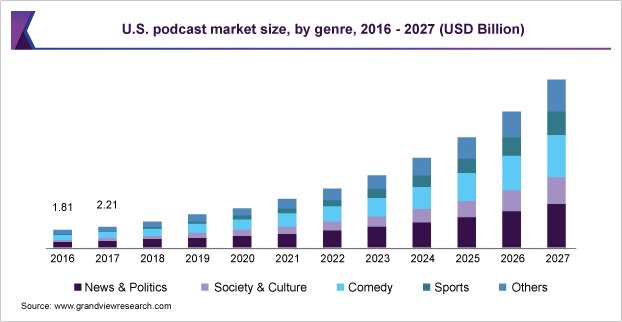
With podcasts now so easily accessible via apps such as Spotify, 75% of the US population alone is now familiar with the term podcasting—and growing.
You can either create your own or become a guest on other people’s. Both have their pros and cons. A popular choice for podcasting is Anchor, now owned by Spotify.

Generating website traffic from the podcast involves referring to your website in some way during the audio.
If a guest, you will generally be given the opportunity to do so, and may even be linked to or referenced via the show notes.
If it’s your own podcast, you can of course refer to your website as much as you wish, including providing various incentives for listeners to visit.
To leverage the opportunity for long-term traffic growth, incentivize your listeners to join your email list so you can continue to communicate with them, and bring them back to your website repeatedly in different ways.
Download this list of 21 ways to generate website traffic so you have it to refer back to:
16. Grow Your Facebook Audience
In these next few sections, we’ll look at growing your audience on some of the main social media platforms.
By doing so, each time you share content with your audience, it will have an increasing impact on the amount of traffic you generate as a result, and the additional social signals will reinforce and help grow your search visibility.
The good news is that by creating regular content, you have a lot of opportunities to keep communicating with and engaging your audience, keeping your profiles fresh, and helping to attract new followers.
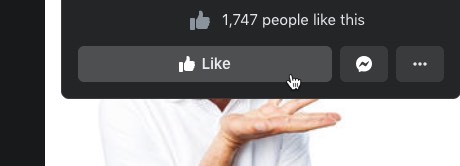
Facebook is less effective than it was in terms of the organic reach of content you post, but it still works. AdEspresso have a number of tips that can help increase your reach, including:
- Sharing good content
- Optimizing for Facebook’s algorithm
- Making shareable video content (here’s how)
- Posting regularly (use Trafficonomy to help)
- Cultivating loyal fans such as via Facebook Groups
This helps—but it will only get you so far.
For all intents and purposes, Facebook is now pay to play, and it’s going to help attract followers to your Page if you’re also regularly paying to boost your posts—just $5 to $10 a time is fine.

As your Page starts to look more active, you can start taking advantage of various organic ways to attract likes, including:
- Sharing your page on your personal News Feed, asking people to follow the Page. To share it, click the Share option towards the top of your Page.
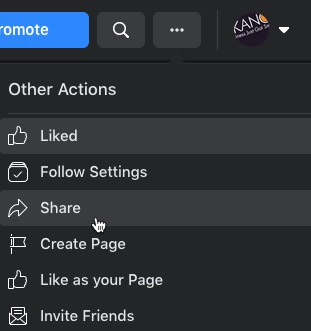
- Inviting friends to like your Page—look for the Invite Friends to Like Your Page section, click the Invite button next to those friends who may have an interest, and click Send Invites.
- Because you’ve been boosting your posts and attracting different types of engagement, you can now invite those people too to like your Page (unless you already have over 100,000 likes!). Look for the reactions section of the post, and click Invite next to the person’s name.
- Post as the Page in groups that are likely to appeal to those you want to like your Page—however, note that Group admins can decide not to allow Pages to join.
Even then, organic methods will in reality only get you so far! To ramp things up, consider:
- Promoting your Page

- Regularly examining your boosted posts, and adding further budget to those that have performed well in terms of reactions. You can then invite more people who have reacted to like your Page.
17. Grow Your Twitter Audience

Research shows that 47% of people who follow a business on Twitter are more likely to visit their website—in other words, growing your followers translates directly into increased website traffic.
Here are ten top ways to do just that—for more information, see the full post on how to grow Twitter followers, but to summarize:
- Tweet regularly and consistently (again, use Trafficonomy to help)
- Use hashtags (here’s how they work on Twitter)
- Use visuals
- Follow-unfollow others
- Engage with others
- Grow followers outside of Twitter
- Create an engaging profile
- Use Twitter ads (again, organic methods will only get you so far in terms of growing your audience)
- Get your account verified
- Tweet at optimal times
18. Grow Your Pinterest Audience
With Pinterest’s huge and growing user base, growing your own audience on the platform can lead to a rapid rise in traffic from the platform.
In 2020 alone, it grew 46% internationally compared to the previous year.
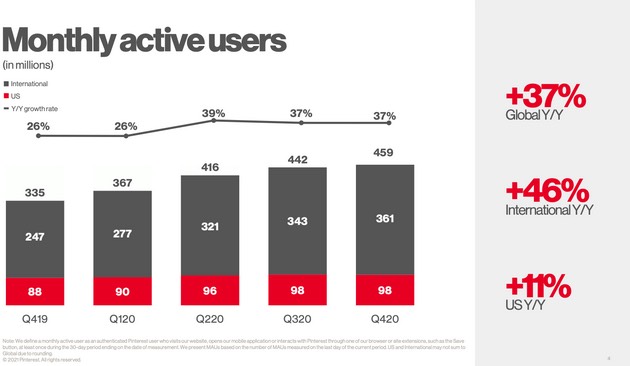
For Pinterest expert Louise Myers, Pinterest is her “top social referrer of traffic” for her B2B site. In general, traffic from Pinterest also generates 4x the revenue of traffic from Twitter, and 27% more revenue than clicks from Facebook.
To grow Pinterest followers, Louise has the following ten tips—see her post for more info:
- Know your target audience—Pinterest shows pins to your own followers first, and from there determines how much further exposure they should attract.
- Complete your Pinterest profile
- Set your Pinterest featured boards
- Verify your site and add Rich Pins
- Create Pins that “look great and stand out in the sea of content”
- Include keywords on your Pinterest boards and descriptions
- Ask your current audience to follow you on Pinterest
- Follow other Pinners, such as your competitors’ followers, and people pinning content from your website
- Pin consistently (as with all of these networks, use Trafficonomy to help)
- Engage with Pins and Pinners, such as repinning and commenting on their pins
Recommended: Using Pinterest for Marketing: The Beginner's Guide
19. Grow Your Instagram Audience
While Instagram is less helpful for generating website traffic than maybe other networks—after all, you can only share links via your bio unless you place a paid post with a relevant clickable CTA (see examples here)—it’s still very powerful for getting people to visit, engage with your brand and keep your business front of mind.
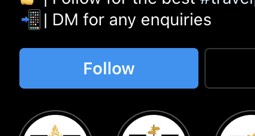
In a separate post on how to grow instagram followers, we share the following 12 strategies:
- Define your audience
- Optimize your bio
- Create engaging content
- Constantly improve through trial and error
- Promote your profile outside of Instagram
- Use paid promotion
- Collaborate with other Instagram users
- Find your unique angle
- Use calls to action
- Use hashtags liberally
- Engage in conversation
- Post regularly and consistently (use Trafficonomy to help)
Download this list of 21 ways to generate website traffic so you have it to refer back to:
20. Grow Your LinkedIn Audience
As on any network, growing followers for your Company Page on LinkedIn takes some time and effort, but pays off over time, particularly for B2B businesses.
After all, the opportunity to visit your website is shown right next to the Follow button on your Page.

In our related post, we share the following 16 tips for growing your LinkedIn followers:
- Optimize your profile (for boosting LinkedIn Page followers, this article from LinkedIn shows you to optimize your Page for search)
- Connect with people you know
- Harness the power of your employees
- Place a Follow button on your website
- Post quality content
- Post regularly—as I keep mentioning, the easiest way to ensure this gets done is to use Trafficonomy
- Get involved in relevant groups
- Make your posts visually engaging
- Be helpful
- Use hashtags (here’s how they work on LinkedIn)
- Reply to comments
- Advertise
- Check out the competition
- Use LinkedIn analytics
- Invite connections to follow
- Experiment
In addition, try:
- Adding a link to your Page in your email signature
- Doing the same from your personal LinkedIn profile
- Using @mention in your posts to mention influencers and companies
- Asking customers and other supporters of your business to follow you
21. Become a Speaker
Finally, remember that generating website traffic is not all online.
There are of course multiple offline methods you can use, but a powerful one is to speak regularly at events.
It’s one way in which for example marketing expert Mark Schaefer has grown his own web presence and influence, and attracted key clients to visit his site and employ his services.

By delivering a presentation (see #14 above) that speaks to your target audience you can not only generate more immediate direct traffic, but also build influential connections, grow your email list and grow your social audiences, all powerful ways to increase your traffic over the long-term.
Additional traffic is also often generated by promotional material both before and after the event itself, not to mention the authority and credibility that speaking gives your web presence in general.
In Conclusion
As this post shows, website traffic generation has never been easier, with so many different strategies and powerful platforms to take advantage of.
I’ve given you six different paid traffic methods, and fifteen organic ones.
For the organic methods in particular, the best results come from regular and consistent activity, including creating, amplifying and repurposing content.
Utilizing both paid and organic methods together gives you huge leverage to reach your target audience, stay in front of them, and attract them back to your website, wherever they happen to be.
Finally, take two secs to grab your free copy of this list of 21 ways to generate website traffic so you have it to refer back to:
Download this list of 21 ways to generate website traffic so you have it to refer back to:
